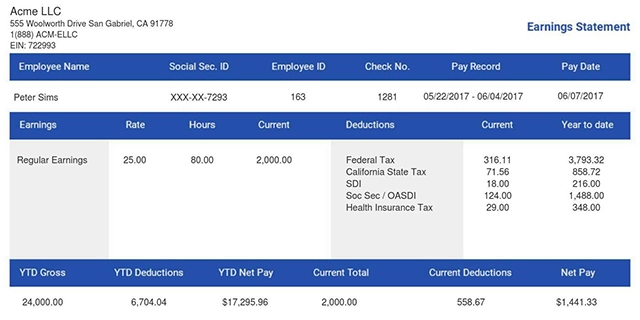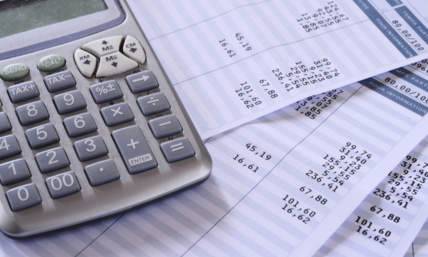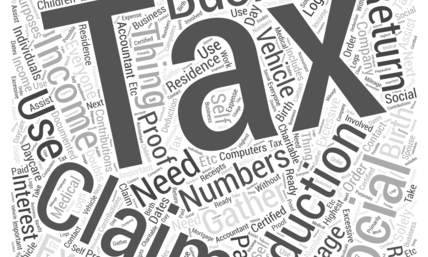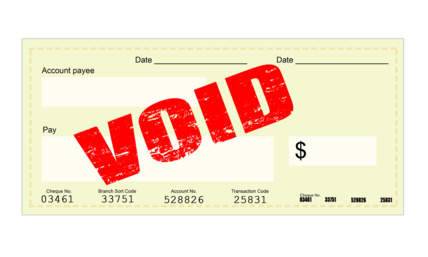What Content Is Added On A Pay Stub?
During every pay period, enterprises are required to compensate employees for their time and the job done. Whether you work on a fixed or hourly basis, you’ll receive a paycheck detailing all the necessary information for the entire month or whichever work period is used by the company.
A paycheck constitutes several parts, one of which is a paycheck stub, also known as a payslip. So, what’s this document, what does it contain, and why is it important? Keep on reading to learn more on this subject.
What is a pay stub?
A pay stub, also known as a pay slip or a paycheck stub, is one of the most important parts of any paycheck received by the employees. As an employee, you’ll either receive an electronic or printed pay stub depending on the company’s policies. This document lists all information about a given employee’s pay, which includes the wages earned over that pay period and any taxes or deductions subtracted taken out of the gross pay.
It’s worth noting that some states require employers to provide paycheck stubs to their employees. Most states, however, only mandate the employer to keep track of their employees’ work and payments. In fact, this is a requirement by the Fair Labor Standards Act (FLSA).

What is added on a pay stub?
Now that you know what a pay stub is, it’s important to know its content. In other words, you should know what to see in any pay stub. Here’s some basic content in every paystub:
-
General information
One thing that you’ll always find on a payslip is the employee and employer’s information. For the employee, some of the data included are their name, social security number, and address. Usually, every worker is required to provide this information before they start their new job. The employer’s information, on the other hand, is the company’s name and its physical address.
-
Gross pay
Another set of information that’s usually added to a pay stub is the employee’s gross pay. This refers to the total amount of your wages before any deductions are taken out. For instance, if your contract reads that you’ll be paid USD$2000 per month, that number indicates the amount paid out by the employer before taxation. In other words, you won’t receive USD$2000 in your bank account, but a lesser value depending on the deductions applied to your monthly payments.
Every employer is expected to include this information in every employee’s pay stub. Keep in mind, though, that the data to be added depends on your state’s laws:
-
Gross pay for the current pay period and year-to-date earnings
-
The number of hours worked
-
The pay rates
-
Any additional earnings (for example, overtime pay)
-
The accrued time off, including vacation time and one’s sick time

-
Net pay
As you’ll realize in your pay slip, there’s a figure that’s recorded after all the calculations, and it’s always lower than your agreed-upon salary. This number is your net pay, which refers to the final amount you’ll receive in your bank account after all deductions have been taken out.
Take, for example, someone who earns a gross pay of USD$2000, and their monthly taxes, insurance covers, and debt repayments amount to USD$500. This person will receive a total of USD$1500 in their bank account every month. Note that the value of your net pay is often printed in bold to help you distinguish it from the gross pay.
-
Back pay
Back pay is another figure you’re likely to find in your bank slip. Also known as back wages, this value represents the amount of money owed to the employee by their employer. It’s considered as an option used by employers to remedy wage violation or a mistake in payment that occurred, whether deliberately or accidentally.
Since this is subjective to the employer-employee agreement, it’s not a necessary addition to all pay stubs.
-
Insurance deductions
You probably have several insurance benefits in your name as an employee. Be it dental, health, life, or disability insurance covers, you might wind up contributing to at least one of them. As such, your share of the contribution will be subtracted from the gross pay and the deducted figure will be included on your pay stub.

-
FICA
Apart from various personal insurance, your contribution to Social Security and Medicare will also be deducted from your monthly salary. These are recorded under FICA in your pay stub.
FICA (Federal Insurance Contributions Act) refers to an employee’s contribution to the aforementioned federal programs. Keep in mind that the percentage of your earnings channeled to these programs may vary every year. Therefore, it’s imperative that you update yourself regularly on the same to avoid any confusion.
Currently, the Social Security tax rate stands at 6.2% for the first USD$147,000 of your earnings. Medicare deduction rate, on the other hand, stands at 1.45% in 2021. For earnings over USD$200,000, an additional 0.9% Medicare tax rate is applied.
On average, most people end up with a total of 7.65% FICA tax rate.
-
Employer’s contribution
Employers are also required to make various offerings on behalf of their employees. For instance, FICA tax is divided into two: employer and employee contribution. According to the current laws, every employer is expected to match their employees’ Medicare and Social Security contributions.
For instance, the latest FICA tax rate, as mentioned earlier, is 6.2%. As such, the employer is expected to cover the same in the monthly contributions. Therefore, if this value represents USD$1000 of one’s salary, their employee will give the same to the relevant authorities. In total, both parties will have contributed 12.4% to FICA.
Although some of these figures aren’t deducted from your gross salary, they’re still included on the pay slip. Just like your gross income, these values are listed for both the current individual pay period (monthly or weekly) and the total year-to-date earnings.

-
Contribution to a retirement plan
Does your employer have a retirement plan in place for all their employees? If that’s the case, then all your contributions will be included in the pay stub. Whichever retirement plan you choose to consider, it’s recommended that you channel at least 15% of your gross income to this program.
Keep in mind that this could be made into a 401(k) match from your employer, 401(k) plan, Roth IRA, or IRA. All the necessary information is included in your pay stub to help you keep track of your earnings.
-
Wage garnishments
Another information that you’ll always come across on any pay stub is wage garnishments. This represents the amount withheld by your employer to pay off any debt you might have. For instance, the employer is expected to deduct any amount that’ll be channeled to child support or tax bill payments. Of course, this isn’t consistent with all paychecks because not all employees have debts or loans to service.
Importance of pay stubs
So, why are pay stubs important? As you already know, a pay stub includes all critical information about your personal finances. For instance, this document will show you how much you’ve earned within a given pay period. It’ll also give you an idea of the amount of money deducted from your gross pay. With this information in mind, you can easily budget for the expected cash every month.
As mentioned earlier, employers aren’t obligated to include pay stubs in their employees’ paychecks. However, most business owners choose to include electronic or printed documents to enhance transparency. With all the calculations shown clearly on every pay stub, the employees, especially the new ones, will understand why the amount of cash received in their bank account is lower than the expected salary.
Why automate pay stubs?
Providing pay stubs is something that every employer strives to achieve every month. However, as the team grows in number, this process continues to become more demanding and monotonous. Manually tracking all the information you need to include in these payslips is time-consuming and may slow down other operations within your business.
Investing in automation systems will help get rid of all these worries. There are many dedicated apps designed to track deductions, wages, and the total number of hours worked. Apart from enhancing productivity, automation helps get rid of unnecessary mistakes that would normally result from human error.
If payroll software is something you’re interested in finding out more about then we also have previous articles on our blog on this subject which include:

Conclusion
Pay stubs are important documents when it comes to paychecks because they hold critical financial information of the employees. The data included in these documents may vary from one company to another and will also depend on the state laws. However, some of the things you’ll always find on any pay stub include the employer and employees’ general information like their names and addresses.
A payment stub should also state one’s gross pay for a given pay period, the deductions, and their final net pay as a result of these calculations. Apart from your deductions, your employer’s contribution to various programs, such as Medicare and Social Security, will also be included in your monthly pay slip.















